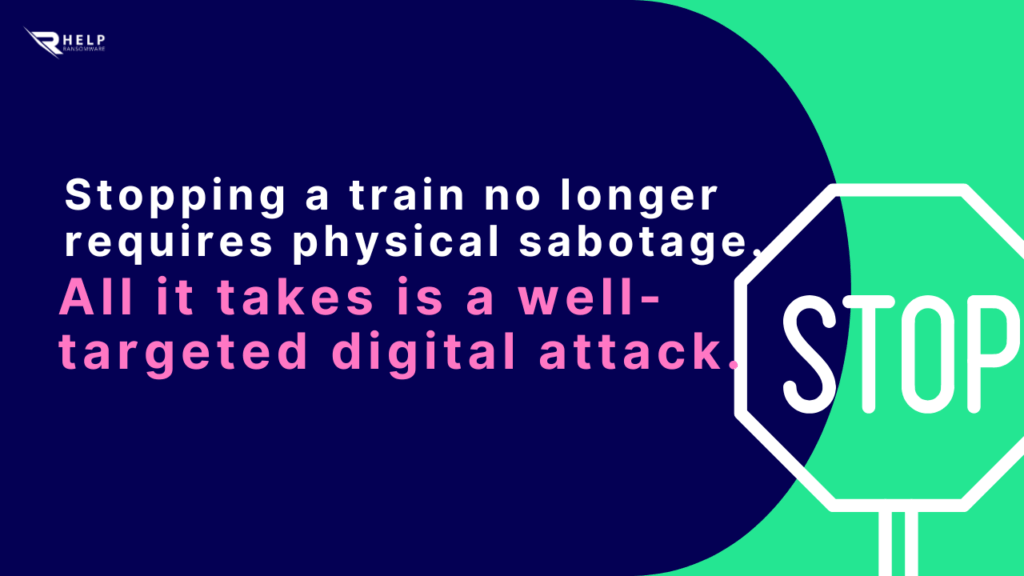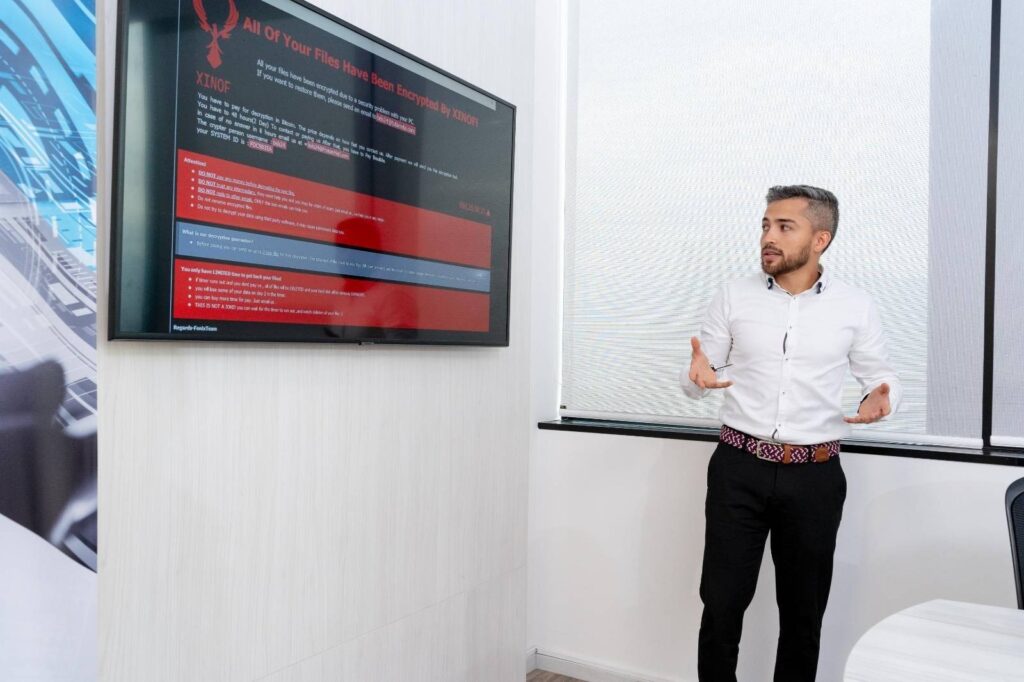Digitizing rail transport has improved efficiency. But it has also opened new doors for cybercriminals.
The technological revolution has reached the rails. From connected sensors to SCADA systems, modern railways no longer rely solely on rails and machines. The rail network is completely digitalized, making it a direct target for ransomware.
In this context, experts warn of a worrying trend: signaling, control, and communication systems are being targeted by increasing attacks seeking to disrupt service, compromise security, and demand multimillion-dollar payments to restore normalcy.
📉 According to INCIBE, current trains operate on technological infrastructures that, if not properly protected, can be infiltrated by malware and used as vectors for digital blackmail.

What can ransomware do to the railway environment?
The consequences of an attack go far beyond the digital:
- Rail traffic halted for hours or days.
- Disruption of communications between stations and trains.
- Encryption of operating systems that manage security and traffic control.
- Demands for multimillion-dollar ransoms to release essential data.
- Physical risks if signaling or automated orders fail.

Immediate Ransomware Help
Don’t let ransomware hold your business hostage. Our experts are ready to recover your data and secure your systems.
As we explained in this analysis of ransomware attacks, cybercriminals are no longer focused solely on data theft, but also on critical service disruptions that force victims to negotiate under pressure.

Why is it such a desirable goal?
Ransomware strikes where three factors are present: urgency, visibility, and weakness. The rail sector meets all of these:
- Operational urgency : every minute that the train is stopped means economic losses and logistical chaos.
- Public visibility : A failure impacts thousands of passengers and becomes immediate news.
- Structural weakness : Many operators still use legacy systems, unpatched devices, and poorly segmented networks.
In addition, ransomware exploits human error: uncontrolled remote access, exposed devices, weak passwords, or simple phishing emails.
Which rail systems are at risk?
The most vulnerable are usually:
- SCADA and PLC that control traffic and signaling.
- Scheduling and fleet management systems.
- Remote platforms for station monitoring.
- Predictive maintenance networks and IoT sensors.
- Industrial Wi-Fi infrastructures and checkpoints.
If any of these elements fail, the entire service is affected.
How to prevent a ransomware attack on rail transport?
To prevent a ransomware attack, we recommend taking immediate measures such as:
- Update industrial and SCADA software with the latest patches.
- Isolate operational networks from administrative or public networks.
- Implement firewalls, EDR, and continuous monitoring.
- Establish encrypted backups with rapid recovery in case of emergencies.
- Audit remote access and enforce authentications.
- Train operational staff in basic cybersecurity.

Immediate Ransomware Help
Don’t let ransomware hold your business hostage. Our experts are ready to recover your data and secure your systems.
If you don’t have a clear strategy yet, check out our ransomware prevention guide, designed for critical environments like this one.
What if your systems have already been encrypted?
Don’t make hasty decisions. In high-pressure situations, trying to resolve an attack without assistance can make things worse. Our experience shows that acting with technical assistance is key to mitigating damage and recovering your operation.
Fortunately, files encrypted by ransomware can be recovered with professional intervention.
Conclusion: protecting trains also means protecting the country
Ransomware has become a real and present threat in all sectors. And rail transport—key to mobility, commerce, and social well-being—cannot afford to be vulnerable.
Today, train safety isn’t just measured by brakes and tracks, but also by firewalls, backups, and network segmentation.
Because in the digital age, every car also depends on a secure system.



